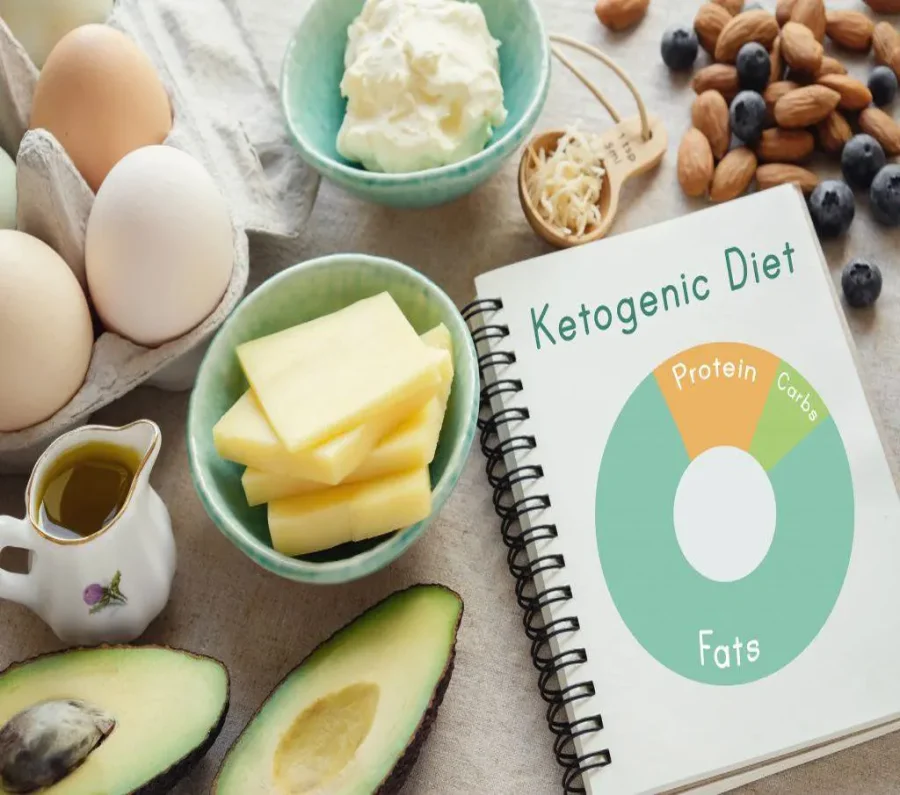Some ketogenic diet foods, including cheese, butter, avocado, eggs, oil, almonds, blueberries, and coconut oil with recipe book titled ketogenic diet Finding yourself confused by the seemingly endless promotion of weight-loss strategies and diet plans? In this series, we take a look at some popular diets—and review the research behind them.
The ketogenic or “keto” diet is a low-carbohydrate, fat-rich eating plan that has been used for centuries to treat specific medical conditions. In the 19th century, the ketogenic diet was commonly used to help control diabetes. In 1920 it was introduced as an effective treatment for epilepsy in children in whom medication was ineffective. The ketogenic diet has also been tested and used in closely monitored settings for cancer, diabetes, polycystic ovary syndrome, and Alzheimer’s disease.
However, this diet is gaining considerable attention as a potential weight-loss strategy due to the low-carb diet craze, which started in the 1970s with the Atkins diet (a very low-carbohydrate, high-protein diet, which was a commercial success and popularized low-carb diets to a new level). Today, other low-carb diets including the Paleo, South Beach, and Dukan diets are all high in protein but moderate in fat. In contrast, the ketogenic diet is distinctive for its exceptionally high-fat content, typically 70% to 80%, though with only a moderate intake of protein.
The premise of the ketogenic diet for weight loss is that if you deprive the body of glucose—the main source of energy for all cells in the body, which is obtained by eating carbohydrate foods—an alternative fuel called ketones is produced from stored fat (thus, the term “keto”-genic). The brain demands the most glucose in a steady supply, about 120 grams daily, because it cannot store glucose. During fasting, or when very little carbohydrate is eaten, the body first pulls stored glucose from the liver and temporarily breaks down muscle to release glucose. If this continues for 3-4 days and stored glucose is fully depleted, blood levels of a hormone called insulin decrease, and the body begins to use fat as its primary fuel. The liver produces ketone bodies from fat, which can be used in the absence of glucose. [1]
When ketone bodies accumulate in the blood, this is called ketosis. Healthy individuals naturally experience mild ketosis during periods of fasting (e.g., sleeping overnight) and very strenuous exercise.









